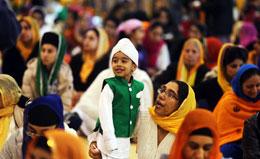Canada a top choice for Indians planning to migrate

India has the second highest number of adults planning to migrate to other countries with the US, Canada and the UK among the most favoured destinations, according to a report by the UN migration agency.
The UN migration agency, the International Organisation for Migration (IOM), in its report ‘Measuring Global Migration Potential 2010-2015’, which analyses people’s migration intentions globally for the period 2010–2015, noted that globally 1.3 per cent of the adult population or 66 million people said they were planning to migrate permanently within the next 12 months.
The most popular destination for those planning to migrate is the US followed by the UK, Saudi Arabia, France, Canada, Germany and South Africa. Half of those planning to migrate live in just 20 countries, led by Nigeria and followed by India, Congo, Sudan, Bangladesh and China.
At 4.8 million people, India has the highest number of adults planning and preparing to migrate – 3.5 million people who are planning and 1.3 million who are preparing. For Nigeria, the number stands at 5.1 million people, Congo 4.1 million, and China and Bangladesh at 2.7 million each.
Canada plans to bring in 300,000 immigrants this year, maintaining the same target as in 2016.
The findings by IOM’s Global Migration Data Centre (GMDAC) shows that less than half a per cent of adults worldwide or 23 million people are actively making preparations to migrate abroad. One in three adults surveyed plans to migrate to a developing country.
West Africa, South Asia and North Africa are the regions with the largest migration potential. The study is based on international survey data by the Gallup World Poll.
“This unique global survey provides an important insight into people’s migration intentions and the profile of those most likely to migrate,” said IOM Director General William Lacy Swing.
The share of the adult population planning to migrate abroad has increased moderately at the global level but more rapidly in certain regions. Adults planning and preparing to migrate are more likely to be male, young, single, living in urban areas and more likely to have completed at least secondary education.
“Improving our understanding of people’s migration intentions could be useful for a range of different policy purposes. It could help policymakers plan for migration, understand better migration pressures, as well as highlighting potential migration trends where alternative sources of migration data are scarce,” it said.
The report, however, added that it is important to note that measuring potential migration is not the same as measuring actual migration. There are many reasons why a migration plan may never be realised including policy restrictions, lack of resources or a change of heart.
IOM Director General Swing added that the new study illuminates one trend that has been emerging for some time, which he explained was the “wide range of countries, both rich and poor, that are attracting migrants.”
India is a migration superpower
India has a long history of migration. More than a century ago, large numbers of Indian migrants – many of them involuntary ones – moved to Africa, the Caribbean and within the Indian subcontinent itself. Some of the top destinations of Indian migrants in more recent decades include Persian Gulf countries, North America and Europe. Here are some facts about India and migration.
1) India is the top source of international migrants, with one-in-twenty migrants worldwide born in India. As of 2015, 15.6 million people born in India were living in other countries. India has been among the world’s top origin countries of migrants since the United Nations started tracking migrant origins in 1990. The number of international Indian migrants has more than doubled over the past 25 years, growing about twice as fast as the world’s total migrant population.
2) Nearly half of India’s migrants are in just three countries: the United Arab Emirates, Pakistan and the United States. About 3.5 million Indians live in the UAE, the top destination country for Indian migrants. Over the past two decades, millions of Indians have migrated there to find employment as laborers. Pakistan has the second-largest number of migrants, with 2 million.
3) Almost 2 million more live in the U.S., making up the country’s third-largest immigrant group. Among Indian Americans, nearly nine-in-ten were born in India. As a whole, Indian Americans are among the highest educated and have some of the highest income among racial and ethnic groups in the U.S. From 2006 to 2015, a total of 323,746 immigrants from India landed in Canada.
4) Only about 1% of India’s birth population lives outside of the country, a similar emigration rate to that of the U.S. At more than 1 billion, India’s population is the second-largest in the world behind China. Consequently, it would take tens of millions more people to leave India before its emigration rate reached the world’s 3% average.
5) About $69 billion was sent by Indian migrants to family and friends in India in 2015, amounting to roughly 3% of the country’s gross domestic product, according to the World Bank estimates. Most of the money comes from Indians living in Persian Gulf countries as well as the U.S., the UK and Canada. India has been the world’s top recipient of migrant remittances since 2008, when it overtook China on this measure.
6) Religious minorities make up a larger share of India’s international migrant population than they do among the nation’s domestic population, according to 2010 Pew Research Center estimates. For example, about 19% of the Indian international migrant population was Christian, compared with only 3% of the population in India. Similarly, an estimated 27% of the Indian international migrant population was Muslim, compared with 14% of the population in India. The reverse is true for Hindus: Only 45% of India’s international migrant population was Hindu, compared with 80% of the population in India.









